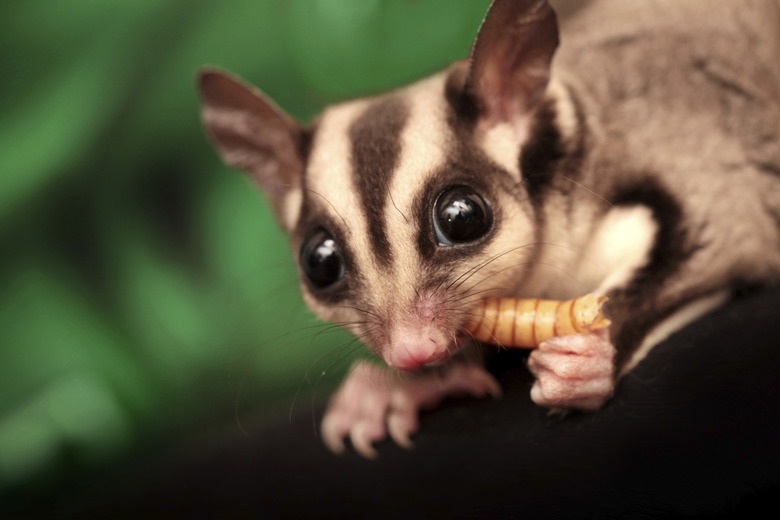What Do Sugar Gliders Eat? Here's Your Guide To Foods Sugar Gliders Can Eat
Sugar gliders (Petaurus breviceps) are omnivores — they eat insects, meat, and vegetation, but not all foods are suitable for sugar gliders. Named for their preference for sweet foods, sugar gliders enjoy drinking nectar and tree sap in the wild. They also enjoy fatty foods, such as mealworms and fly pupae. Note that sugar glider diets are challenging to replicate in captivity.
In captivity, they can become obese if they eat too many sweet and fatty foods, which leads to health problems. A sugar glider's diet should be no more than five percent treats. Sugar glider pellets are available from pet stores, but should be supplemented with proteins, nectar, and vegetables. Feed in the evening, because sugar gliders are nocturnal and eat mostly at night.
Sugar glider nectar
Sugar glider nectar
Sugar gliders benefit from a homemade equivalent to nectar. To make your own leadbeater's nectar mix, you'll need a half-cup and 2 tablespoons of warm water with an equal amount of raw honey, a shelled hard-boiled egg, a teaspoon of a sugar glider-appropriate vitamin supplement, and a half-cup of high-protein baby cereal or Wombaroo high protein supplement.
Put the water, honey, egg, and vitamin supplement in a blender, and start the blender running. Gradually add the baby cereal and continue blending until the mixture is smooth. The nectar mix stays fresh for three days in a refrigerator, and you can also freeze portions for later use. Put about 1 tablespoon of nectar mix per day in the sugar glider cage.
Sugar glider pellets and proteins
Sugar glider pellets and proteins
Insects and meat provide protein for sugar gliders, but these foods don't supply the calcium the animals need. Low calcium levels cause sugar gliders problems with bones and teeth. Boost calcium levels in sugar gliders by feeding them live insects gut-loaded with a calcium supplement. Insects and sugar glider pellets should make up about 50 percent of the total diet.
Sugar glider pellets are commercial food developed for this pet. However, sugar gliders also need about 1 tablespoon of insects per day. Sugar gliders can also eat 1 teaspoon of cooked, lean, unseasoned poultry or beef as an occasional treat. Add it to the sugar glider cage for him to find — or a put a feeding box in the cage during dinner time, because sugar gliders are messy eaters.
Fruit and vegetables
Fruit and vegetables
Small amounts of fruit and vegetables are nutritious for sugar gliders; they add variety to their diets. Sugar gliders in zoos eat apples, bananas, grapes, kiwi fruit, oranges, pears, melons, pawpaws, and papayas. Vegetables sugar gliders eat in zoos include sweet potatoes, low calcium lettuce such as Boston lettuce, and corn. They can also eat tomatoes, carrots, squash, sprouts, and broccoli.
Vegetables are an essential part of the sugar glider's diet because they provide essential nutrients and increases water intake. If water intake is an issue, you can even mist greens before serving. Similarly, wash fruit (and vegetables) thoroughly, and chop them into small pieces before offering them to sugar gliders. About a half-teaspoon of fruit and vegetables per day is sufficient for one sugar glider.
Sugar glider foods to avoid
Sugar glider foods to avoid
Sugar gliders require a varied diet to provide all the nutrients they need, but there are many foods they should not eat. Don't feed sugar gliders wild insects, worms, spiders, or other creatures that might be contaminated with pesticides.
Also avoid apple seeds and fruit pits. Other foods that shouldn't be included in sugar glider diets are artificially sweetened, deep fried or processed foods, or foods high in fat or sugar, such as chocolate. However, water bottles, cleaned and changed daily, are necessary.
